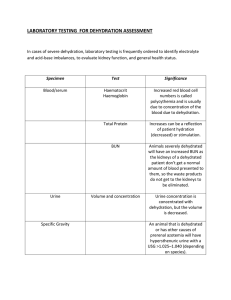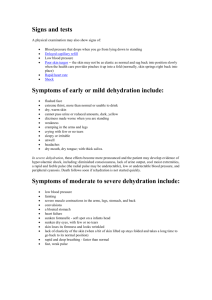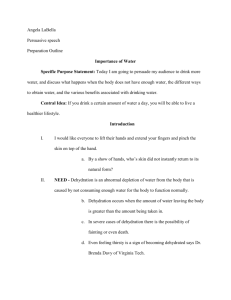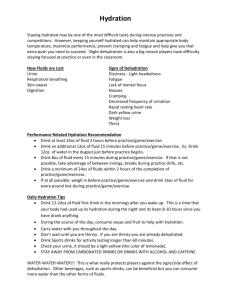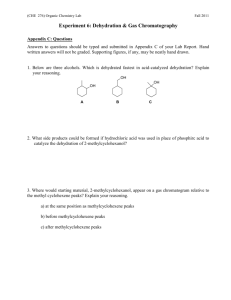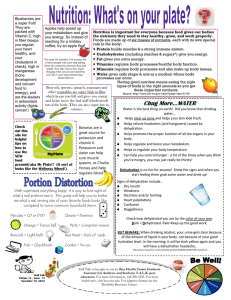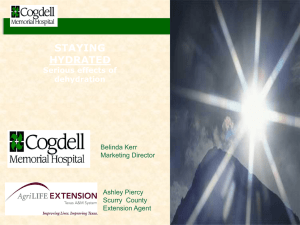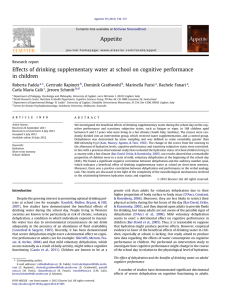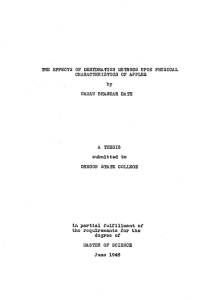Preventing Dehydration in the Workplace Facts About Dehydration:
advertisement
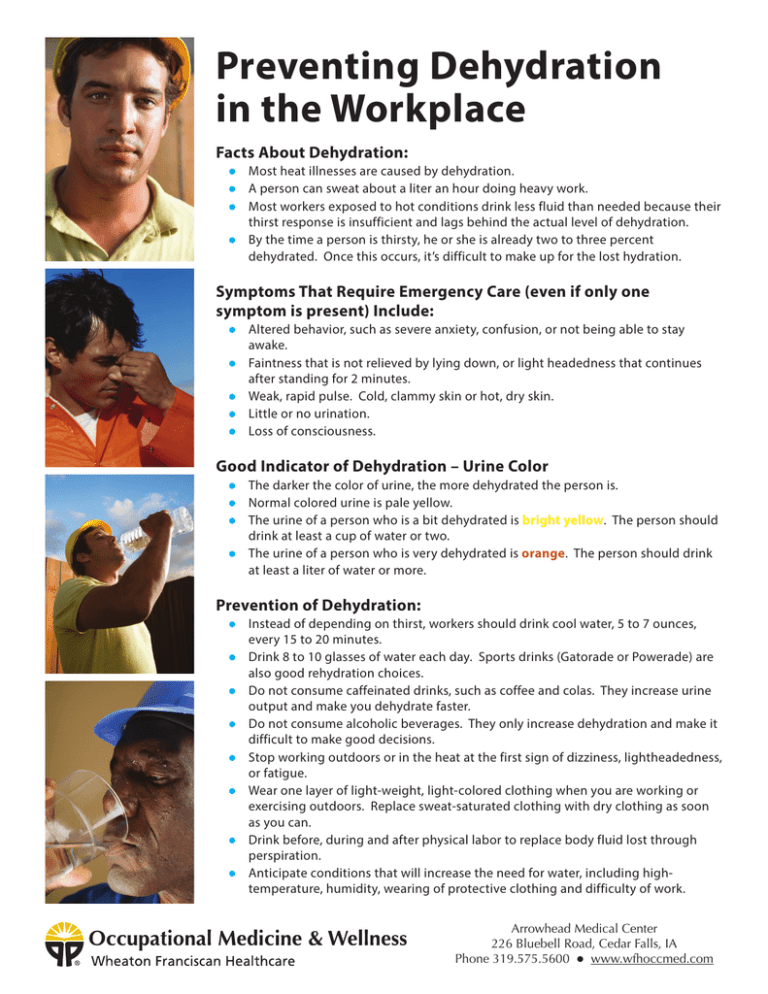
Preventing Dehydration in the Workplace Facts About Dehydration: l Most heat illnesses are caused by dehydration. A person can sweat about a liter an hour doing heavy work. l Most workers exposed to hot conditions drink less fluid than needed because their thirst response is insufficient and lags behind the actual level of dehydration. l By the time a person is thirsty, he or she is already two to three percent dehydrated. Once this occurs, it’s difficult to make up for the lost hydration. l Symptoms That Require Emergency Care (even if only one symptom is present) Include: l l l l l Altered behavior, such as severe anxiety, confusion, or not being able to stay awake. Faintness that is not relieved by lying down, or light headedness that continues after standing for 2 minutes. Weak, rapid pulse. Cold, clammy skin or hot, dry skin. Little or no urination. Loss of consciousness. Good Indicator of Dehydration – Urine Color l The darker the color of urine, the more dehydrated the person is. l Normal colored urine is pale yellow. l The urine of a person who is a bit dehydrated is bright yellow. The person should drink at least a cup of water or two. l The urine of a person who is very dehydrated is orange. The person should drink at least a liter of water or more. Prevention of Dehydration: l l l l l l l l Instead of depending on thirst, workers should drink cool water, 5 to 7 ounces, every 15 to 20 minutes. Drink 8 to 10 glasses of water each day. Sports drinks (Gatorade or Powerade) are also good rehydration choices. Do not consume caffeinated drinks, such as coffee and colas. They increase urine output and make you dehydrate faster. Do not consume alcoholic beverages. They only increase dehydration and make it difficult to make good decisions. Stop working outdoors or in the heat at the first sign of dizziness, lightheadedness, or fatigue. Wear one layer of light-weight, light-colored clothing when you are working or exercising outdoors. Replace sweat-saturated clothing with dry clothing as soon as you can. Drink before, during and after physical labor to replace body fluid lost through perspiration. Anticipate conditions that will increase the need for water, including hightemperature, humidity, wearing of protective clothing and difficulty of work. Arrowhead Medical Center 226 Bluebell Road, Cedar Falls, IA Phone 319.575.5600 l www.wfhoccmed.com
